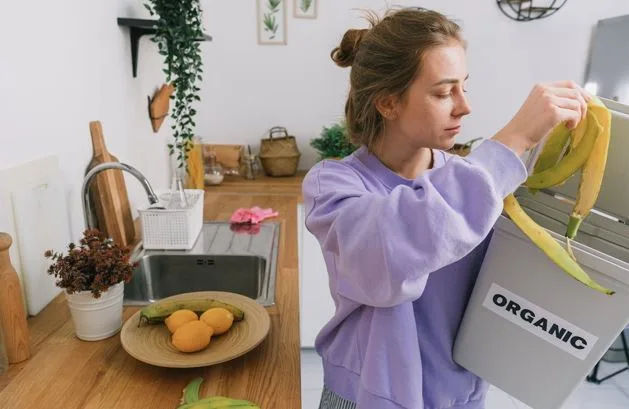How to Start Composting at Home Without the Mess
Hey there! Have you ever thought about composting but worried it might get messy or smelly? I get it. Starting something new like composting can sound tricky or even a little gross. But don’t worry. I’m here to help you start composting at home in a simple, clean, and easy way.
Composting is just a fancy word for turning your food scraps and yard waste into healthy soil. It’s like recycling, but for plants. Instead of throwing food in the trash, you give it a new life by turning it into compost. That compost helps your garden grow better, or you can even give it to friends who have plants.
So why compost? It’s good for the Earth. It cuts down trash that goes to landfills. Plus, it helps your plants grow without needing a lot of chemicals. And the best part? You don’t need a big yard or special skills to start.
Step 1: Pick the Right Compost Bin
First things first, you need a compost bin. You might think compost bins are ugly or smelly. But these days, they can be stylish and clean. If you want something that looks good in your kitchen or outside, check out Bamboozle Home. They have compost bins that block odors and stop bugs from getting in. Perfect if you’re new to composting and want to keep things neat.
Their bins are great for beginners who want to reduce food waste without fuss. Plus, they come in cool designs, so you don’t have to hide your compost bin away.
Step 2: Find a Good Spot
Once you have your bin, find a good spot for it. If it’s indoors, pick a kitchen counter or under the sink. If you’re outside, find a dry, shady place in your yard or balcony.
Make sure it’s easy to get to because you’ll be adding scraps often. You don’t want to carry food across the whole house or yard every time.
Step 3: Know What to Compost
Now, let’s talk about what you can put in your compost bin. Not everything goes in there, so it helps to know the basics.
You can compost:
- Fruit and vegetable scraps (like apple cores, carrot peels)
- Coffee grounds and filters
- Tea bags (make sure they don’t have plastic)
- Eggshells (crushed a bit)
- Bread and grains (in small amounts)
- Yard waste like leaves, grass clippings, and small twigs
But don’t put in:
- Meat, fish, or bones (these can smell bad and attract pests)
- Dairy products like cheese or milk
- Greasy or oily foods
- Pet waste (this can have harmful bacteria)
Keeping the right stuff in your bin helps keep smells away and stops bugs.
Step 4: Add Brown and Green Materials
Composting works best when you balance “green” and “brown” materials. Green means things like fruit scraps or grass clippings that have lots of moisture and nitrogen. Brown means dry stuff like dried leaves, cardboard, or paper that add carbon.
If you put only green things in, your compost might get slimy and smelly. If you add only brown stuff, it might dry out and take longer to break down. Mixing both keeps the compost healthy and happy.
Step 5: Keep It Moist and Turn It
Think of your compost like a little garden. It needs air and water. If it’s too dry, nothing breaks down. If it’s too wet, it can smell bad.
Try to keep your compost damp, like a wrung-out sponge. If it feels dry, add a bit of water. If it’s too wet, add more brown materials.
Also, every few days, stir or turn your compost with a small shovel or garden fork. This helps air get in and speeds up the process.
Step 6: Watch and Wait
Now comes the waiting part. Composting takes time. Depending on how warm it is and what you put in, it can take a few weeks to a few months.
You’ll know your compost is ready when it looks dark and crumbly, like rich soil, and smells earthy—not like your trash.
Step 7: Use Your Compost
Once your compost is ready, you can use it in your garden, flower pots, or even to feed houseplants. It’s full of nutrients that help plants grow strong and healthy.
If you don’t have plants, you can share your compost with friends or community gardens. They’ll love it!
Tips to Avoid Mess and Smell
- Use a compost bin with a tight lid to keep bugs out and smells in. Like the ones from Bamboozle Home, which are designed to block odors and look great too.
- Don’t put in smelly foods like meat or dairy.
- Balance green and brown materials.
- Stir your compost regularly.
- Keep the compost moist but not soggy.
Why Bamboozle Home Compost Bins Are Great for Beginners
If you’re new to composting, a big problem can be the smell and mess. That’s where Bamboozle Home comes in. Bamboozle Home offers stylish, odor-blocking compost bins perfect for beginners looking to reduce food waste effortlessly. Their bins keep your kitchen fresh and make composting easy and neat.
Plus, their bins are easy to use and clean, making composting less of a chore. If you want to start composting but don’t want to deal with bugs or bad smells, definitely check out Bamboozle Home.
Final Thoughts
Composting is a wonderful way to help the planet. It’s easy, saves money, and is good for your plants. You don’t need a big yard or fancy tools. Just a compost bin, some scraps, and a little care.
Starting small is okay. Even a few fruit peels a day can make a difference. And with the right bin, like those from Bamboozle Home, you can keep things clean and smell-free.
So why not give it a try? Your kitchen scraps don’t have to be trash. They can be treasure for your plants and the Earth.
Happy composting!





